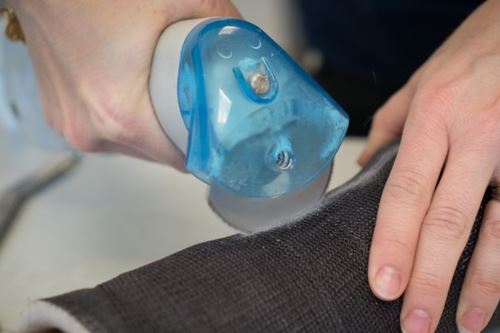-
Home
-
How Does a Cast Saw Work?
How Does a Cast Saw Work?
August 3, 2023

If you've ever had a broken bone and needed a cast to help you heal, you've also had to have that cast removed. For many people, the thought of having a cast taken off brings on feelings of nervousness or anxiety. In this article, we take a closer look at how a cast saw works, what to expect during the removal process, and how to ensure a safe and pain-free experience.
What is a Cast Saw?
Casts are typically made either of plaster or fiberglass and are used to help hold a broken bone in place while it heals. In order to remove a cast, a special saw is used. It has a sharp, small-toothed blade that is specifically designed to cut through the material of the cast and not through the skin.
Depending on the patient and the type of cast, a more specific type of saw may be used. The DeSoutter CleanCast™ CSB-100A Cordless High-Power Cast Saw System, for example, is ideal for removing heavier casts, while the DeSoutter CleanCast™ CSP-201 Pediatric Cast Saw System is designed for the smaller casts of pediatric patients.
How Does a Cast Saw Work?
If you're nervous about the idea of having a saw used on your arm or leg, don't worry—cast saws work differently than regular saws. The blade moves back and forth rapidly, cutting the cast as it goes. While this sounds scary, it is actually a very safe and effective way to remove a cast when done properly.
The saw is designed to only cut through the material of the cast, protecting the skin underneath. However, it is important to work with a trained cast technician who knows how to use the saw properly in order to prevent any skin injuries or burns.
How Long Does it Take to Remove a Cast?
The time it takes to remove a cast varies based on its size, shape, and material. Larger casts will generally take more time to remove than smaller ones, and fiberglass casts typically come off more easily than plaster casts. Additionally, if the cast has any irregular shapes or angles, it may take a bit longer to remove. However, most cast removals take only a few minutes.
Is it Painful to Remove a Cast?
If you're worried about what it will feel like when your cast is removed, you can rest assured that it is typically not a painful process. You may feel some slight pressure or vibration as the saw cuts through the material of the cast, but this should not be painful. The cast technician will work carefully to remove the cast without causing any discomfort or pain.
Improper use of a cast saw can lead to minor burns or cuts the on the skin. While the chance of this happening is very low, it is possible if the saw is used incorrectly. This is another reason why it's important to work with a trained professional who knows how to use the saw properly and safely.
Cast saws are important tools used to safely and effectively remove orthopedic casts. While it may seem intimidating, it is a very safe process when done properly by a trained professional. Understanding how the cast saw works can help alleviate any worries you may have about the process, so you can focus on healing and getting back to your normal activities.